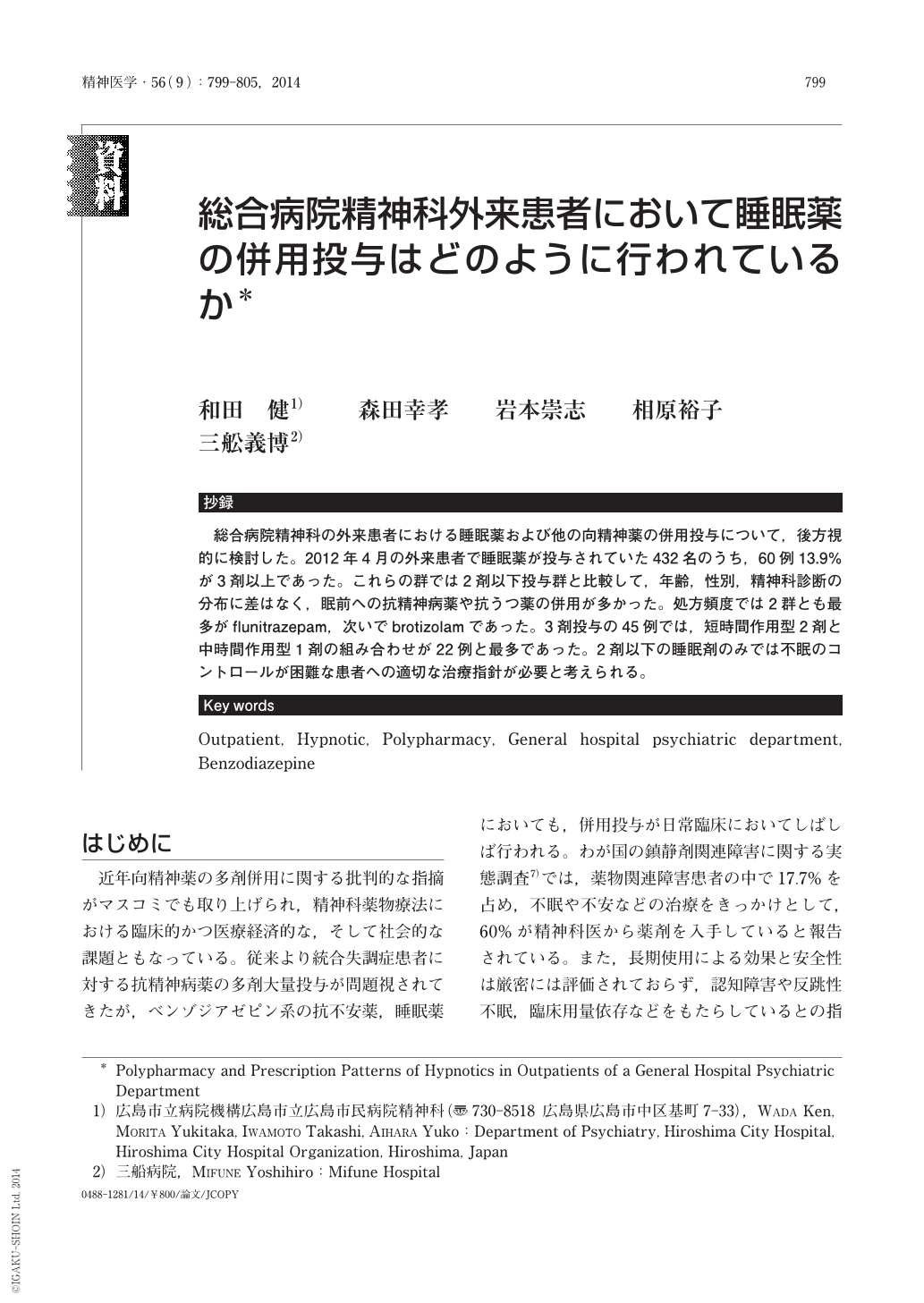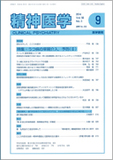Japanese
English
- 有料閲覧
- Abstract 文献概要
- 1ページ目 Look Inside
- 参考文献 Reference
抄録
総合病院精神科の外来患者における睡眠薬および他の向精神薬の併用投与について,後方視的に検討した。2012年4月の外来患者で睡眠薬が投与されていた432名のうち,60例13.9%が3剤以上であった。これらの群では2剤以下投与群と比較して,年齢,性別,精神科診断の分布に差はなく,眠前への抗精神病薬や抗うつ薬の併用が多かった。処方頻度では2群とも最多がflunitrazepam,次いでbrotizolamであった。3剤投与の45例では,短時間作用型2剤と中時間作用型1剤の組み合わせが22例と最多であった。2剤以下の睡眠剤のみでは不眠のコントロールが困難な患者への適切な治療指針が必要と考えられる。
We performed a retrospective chart review to clarify the polypharmacy and prescription patterns of hypnotics and other psychotropic medications prescribed to outpatients treated in a general hospital psychiatric department. Of the 432 outpatients who visited our department in April 2012 and were treated with a hypnotic, 60 (13.9%) received 3 or more of those drugs. These patients did not differ with regard to age, sex, or psychiatric diagnosis from outpatients prescribed 1 or 2 hypnotics. Patients who received 3 or more hypnotics were more likely than those who received 1 or 2 to use concurrent antipsychotic and/or antidepressant drugs at bedtime. Flunitrazepam was the most popular prescription drug for insomnia, followed by brotizolam, for all patients in this study. In patients who received 3 hypnotics, the most frequent drug combination pattern was 2 short-acting hypnotics and 1 intermediate-acting hypnotic. Appropriate therapeutic recommendations are urgently needed for patients with refractory insomnia who show only partial improvement with administration of 1 or 2 hypnotics.

Copyright © 2014, Igaku-Shoin Ltd. All rights reserved.


